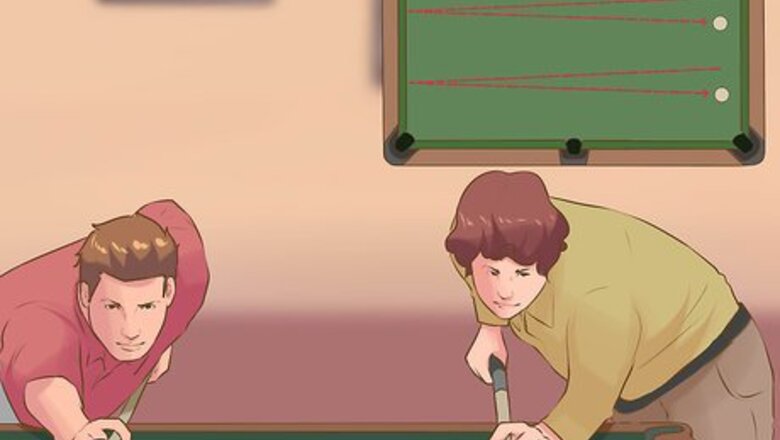
views
Basic Breaking Rules
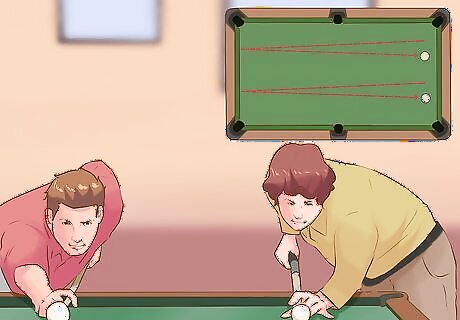
Determine who breaks first by "lagging." Each player sets a ball on the table behind the "head string," meaning between the end of the table and the second pair of "diamonds" or marks on the table's sides. At about the same time, each player hits one of the balls, aiming to touch the far end of the table and return as close to the near end as possible without touching the near end or the sides. Whoever comes closest gets to break. Repeat the lag if both players hit the sides or nearest end. If you are playing multiple rounds, you only need to lag before the first one. After that, players take turns breaking.
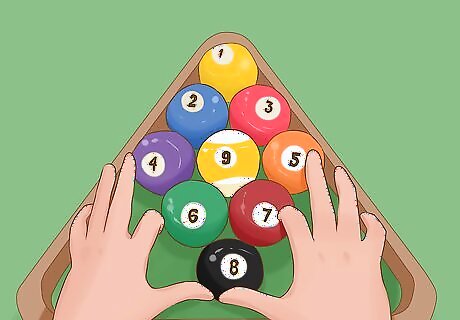
Set up the rack. Set up the nine object balls (everything besides the un-numbered cue ball) in a tightly packed diamond shape. The ball at one end of the diamond is on top of the marked "foot spot" on the table surface. The nine ball is in the center of the diamond, and the other balls are arranged randomly around it.
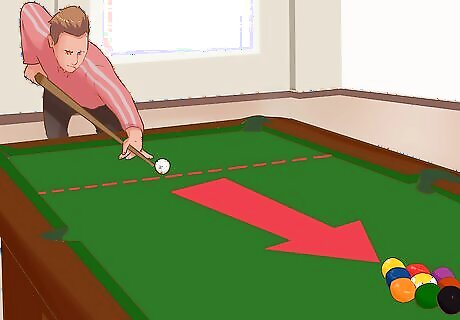
Break by shooting the cue ball at the rack. The player about to break places the cue ball behind the "head string," on the far side of the table from the diamond-shaped rack of balls. (Remember, the head string runs between the second pair of diamonds marked on the table's sides.) That player then shoots the cue ball at the one ball at the diamond's closest tip. In official rules, the break must either cause one numbered ball to enter a pocket, or cause at least four balls to hit a side of the table. If neither of these happen, the break is considered a foul, and the other player may place the cue ball anywhere on the table. You may wish to play without break fouls if you are playing casually.
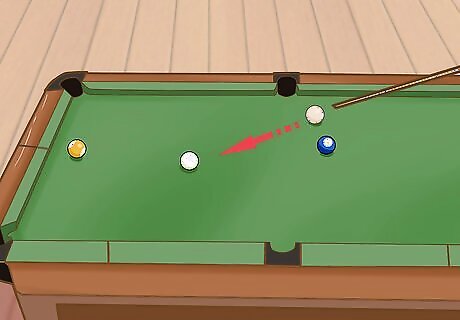
Decide whether to "push out." Immediately after a player breaks, that same player can declare that he will "push." If he does, he takes an additional shot with the intention of putting the ball in position; unlike with a normal shot, this shot does not require any balls to hit a cushion or be pocketed. The push out is always optional. If the player does not say he will "push," the shot is considered a normal shot and ordinary foul rules apply.
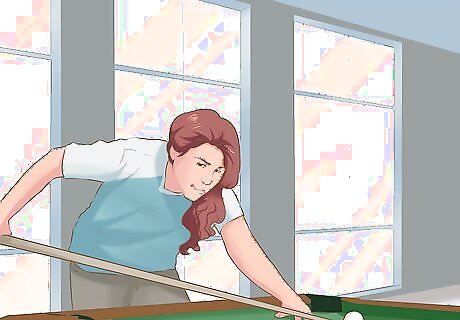
Begin normal play. If the breaker pocketed a ball on the break (not the push out), that player continues shooting until he fails to pocket a ball or commits a foul. Otherwise, the player who did not break has the first chance to play. However, if that player thinks the cue ball is in a position that isn't advantageous, she may pass and have the player who broke make the first shot instead. The player who broke must take the first shot if his opponent passes. He cannot pass back.
Practicing Basic Break Technique
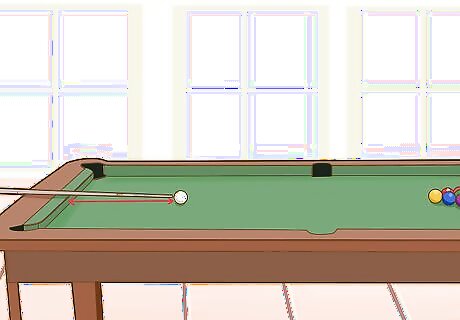
Keep some space between the cue ball and the near cushion. If the cue ball is placed too near the cushion, your pool cue will be at a steep, awkward angle, making it difficult to hit with speed and control. Place the cue ball far enough from the cushion to allow for your normal range of motion when using a cue, then add an additional 1–2 inches (2.5–5cm) of space to allow an even flatter, steadier cue. Note that the cue ball must be placed behind the "head string." If the head string isn't drawn on the table, find it by looking for the "diamonds" or marks on the table's sides, and counting to the second pair of diamonds from the table's end. The imaginary line between this pair of diamonds is the head string.
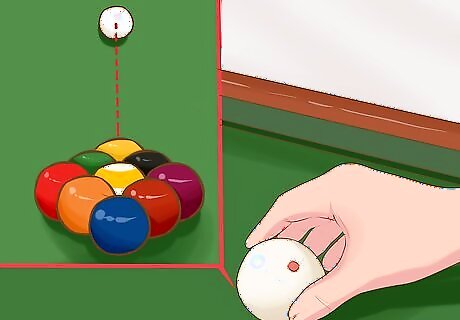
When you first begin practicing, place the cue ball directly in line with the rack. The more in line the cue ball is with the rack, the easier the shot will be. As you get better at breaking, you can try more advanced breaking techniques described below. But while you're a beginner, stick with the center placement.
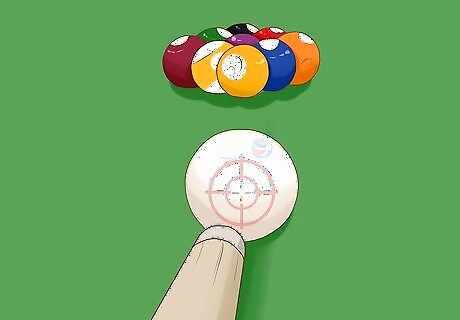
Hit the cue ball in its center. For the basic break shot, aim for the center of the cue ball, not above or below it. If you notice your cue ball has backspin or forward spin, try watching the tip of your pool cue as you shoot to look for unintentional movements. Practice an even motion while shooting, keeping your elbow level to avoid shifting the pool cue up or down.
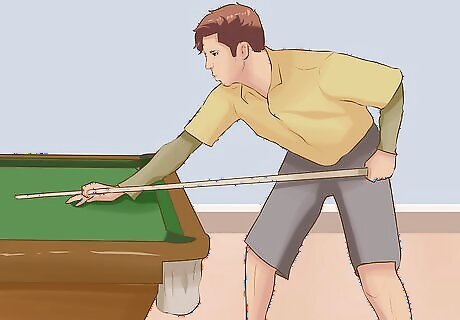
Practice your balance and positioning. For a powerful break shot, you'll need to stay balanced as you hit the cue ball, then follow through by moving forward. Many players stand slightly to the side of the ball to allow the cue a full range of motion, and may bend at the knees before they strike, encouraging a fluid follow through.
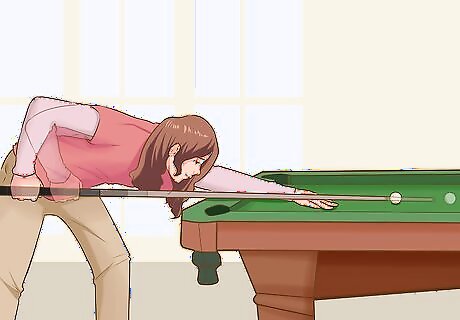
Use an exaggerated follow-through. Following through, or continuing to move the cue forward after striking the ball, is an excellent way to practice and evaluate your break shots. Accelerate the cue through the ball, so you continue to move in one fluid motion rather than stopping or moving jerkily after the ball is struck. Keep your eyes down near the cue and watch the cue ball as you follow through. If the cue does not move in line with the cue ball, practice shooting steadily and accurately until it does before you concentrate on strength.
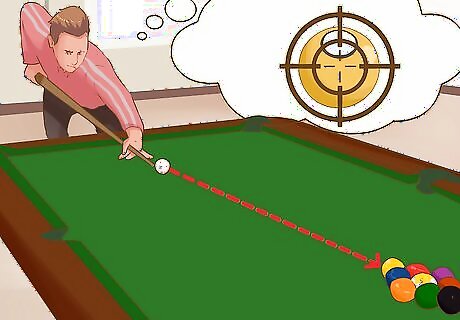
Aim for the center of the one ball. The most common place to aim, and the easiest, is the one ball, at the nearest point on the rack. If the cue ball is not in line with the diamond, try not to let the diamond shape confuse your aim. Focus on the single ball you are aiming for, and try to hit the exact center of that ball.
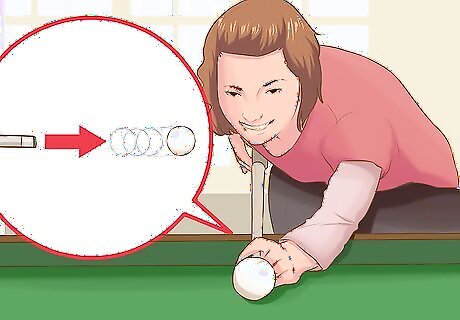
Choose control over power. It's better to hit the cue ball softly and aim correctly, rather than break hard and fast but lose control of your cue ball. If your cue ball often misses or "scratches," meaning it ends up fouled by falling in a pocket, try to shoot more gently. Practice stronger "power breaks" once you are able to consistently hit the center of the ball you are aiming for.
Learning Advanced Breaking Techniques

Place the cue ball near one of the side cushions. Once you've achieved consistent accuracy and power shooting from the center, try placing the cue ball nearer one fo the side cushions. Give yourself about 2–3 inches (5–7.5 cm) of space, or however much room you need to shoot comfortably. Most professional players start near this area when breaking in tournaments. Some tournaments may require you to begin within a certain area closer to the center, due to the dominance of this technique.
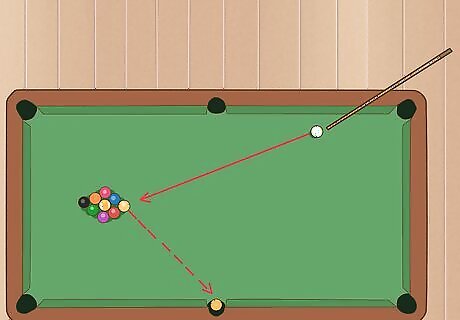
Practice getting the one ball into the side pocket. Professional players manage to pocket a ball on the break a majority of the time. One way to accomplish this is to strike the one ball, at the nearest tip of the diamond, and get it to rebound off the rest of the diamond and into the side pocket. Try starting from near the left cushion and aiming to put the one ball in the right side pocket, or vice versa. Some players do not like this technique, since it can be hard to control the two and three balls which you'll need to hit next. Consider it good practice for pocketing a ball on the break, and decide whether to continue using it once you are more experienced.
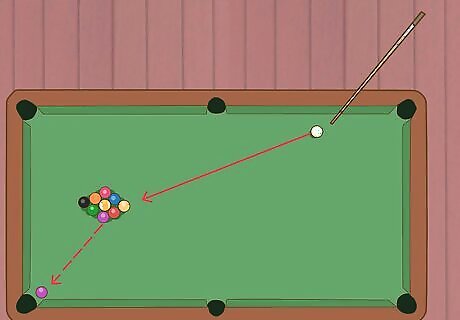
Practice getting one of the side balls into the corner pockets. The two balls on the shorter tips of the diamond, or "wing balls," can sometimes be hit into the corner pockets, although don't expect to get both at once! This technique will likely require a fair amount of practice. Begin by placing the cue ball near the left side cushion, and aim at the center of the one ball. Watch the wing ball near the left cushion and see where it ends up. If it drifts toward the end cushion, set up the rack again and aim slightly more to the right. If the wing ball hits the left side cushion instead, aim to the left next time. Once you've found a spot that consistently gets the wing ball near or in the corner pocket, practice the shot repeatedly to make it more consistent.
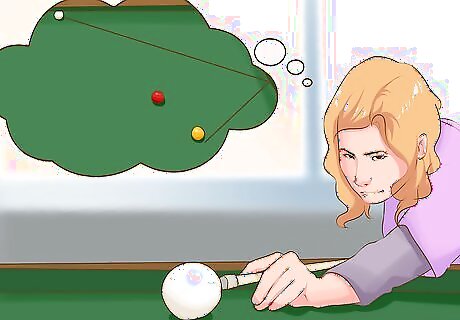
Think about where the cue ball and one ball will end up. Once you can consistently hit the spot you are aiming for, and rarely scratch or foul on the break, start thinking about positioning after the break. With enough control, and potentially by adding spin to the cue ball, you can get the cue ball to end up near the center line of the table, giving yourself a better chance at a good second shot if you manage to pocket a ball on the break. If you are not trying to get the one ball in, watch where it ends up as well, since it is the next ball you will have to pocket. Ideally, the one ball ends up near the center of the table, in line with the cue ball.
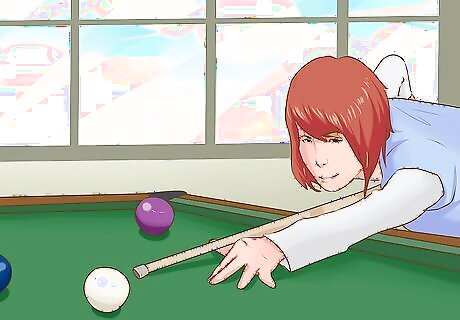
Find a new table's sweet spot. Each table has slightly different characteristics, and if you move to a new one, you might find your breaks are not as effective. Move the cue ball around until you find a location that gets good results for your preferred strength and style of break. Try to find a worn-out spot on the table's surface where many players have placed a cue ball before. This is not ideal, as you may have a different break style than those players, but it's worth a try if you don't have more time to spend exploring different positions.














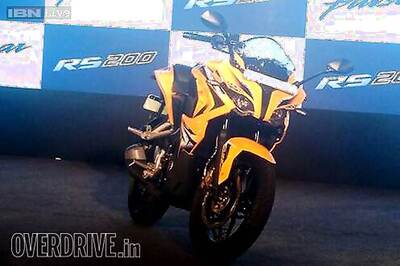

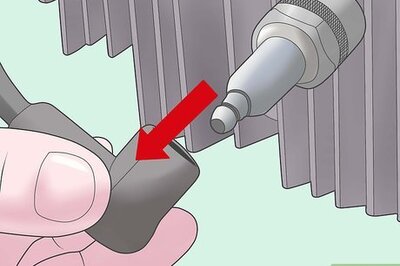
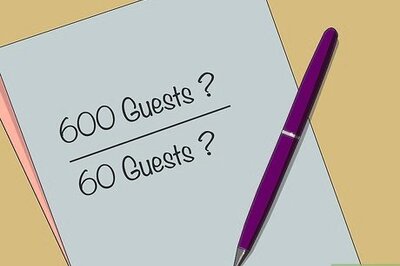


Comments
0 comment